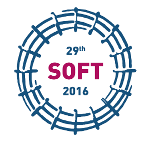Speaker
Shengpeng Yu
(Institute of Nuclear Energy Safety Technology)
Description
The advantages of CAD based Automatic Modeling make it possible to efficiently describe and verify complex nuclear system, such as ITER, for Nuclear Analysis. SuperMC/MCAM, the most widely applied CAD based Automatic Modeling tool for Monte Carlo, is currently focusing on modeling for Monte Carlo partile transport programs.
Being more and more detailed, the radiation shielding modeling of fusion reactors has becoming more and more complex. For example, ITER C-lite has several more times of cells and surfaces than previous ITER reference neutronics models, which makes the CAD modeling time-consuming and difficult for error checking. In order to overcome this difficulty, A CAD-based hierarchical modeling method, named "CAD-based Hierarchical Modeling", was developed for the purpose of managing geometries in hierarchical way, in which the whole transport space is subdivided into sub-regions accommodating corresponding sub-regions or geometric solids. It makes the overall CAD-based modeling being easy to break down to sub-tasks for both manual preprocessing and automatic conversion. In "CAD-based Hierarchical Modeling", solids and sub-region of adjacent sub-regions may conflict with imperceptible overlaps which are acceptable in design accuracy but in the end may cause corruption of Monte Carlo particle transport calculation. An automatic overlapping eliminating method named "Threshold based Face Merging" was also developed to tackle this problem. During automatic conversion from CAD model to Monte Carlo model, it scans adjacent area between sub-regions, locate and remember the surfaces closer to each other than the threshold and merge them to a single one.
Using the new methods, a SuperMC transport model of ITER C-lite was built according to the C-lite model released by ITER. The agreed calculation results between SuperMC on the newly built C-lite model and MCNP on the original C-lite model verified the correctness of the new methods.
Co-authors
Gan Quan
(Institute of Nuclear Energy Safety Technology, Hefei, China)
Long Pengcheng
(Institute of Nuclear Energy Safety Technology, Hefei, China)
Shengpeng Yu
(Institute of Nuclear Energy Safety Technology, Hefei, China)
Song Jing
(Institute of Nuclear Energy Safety Technology, Hefei, China)
Wu Bin
(Institute of Nuclear Energy Safety Technology, Hefei, China)

